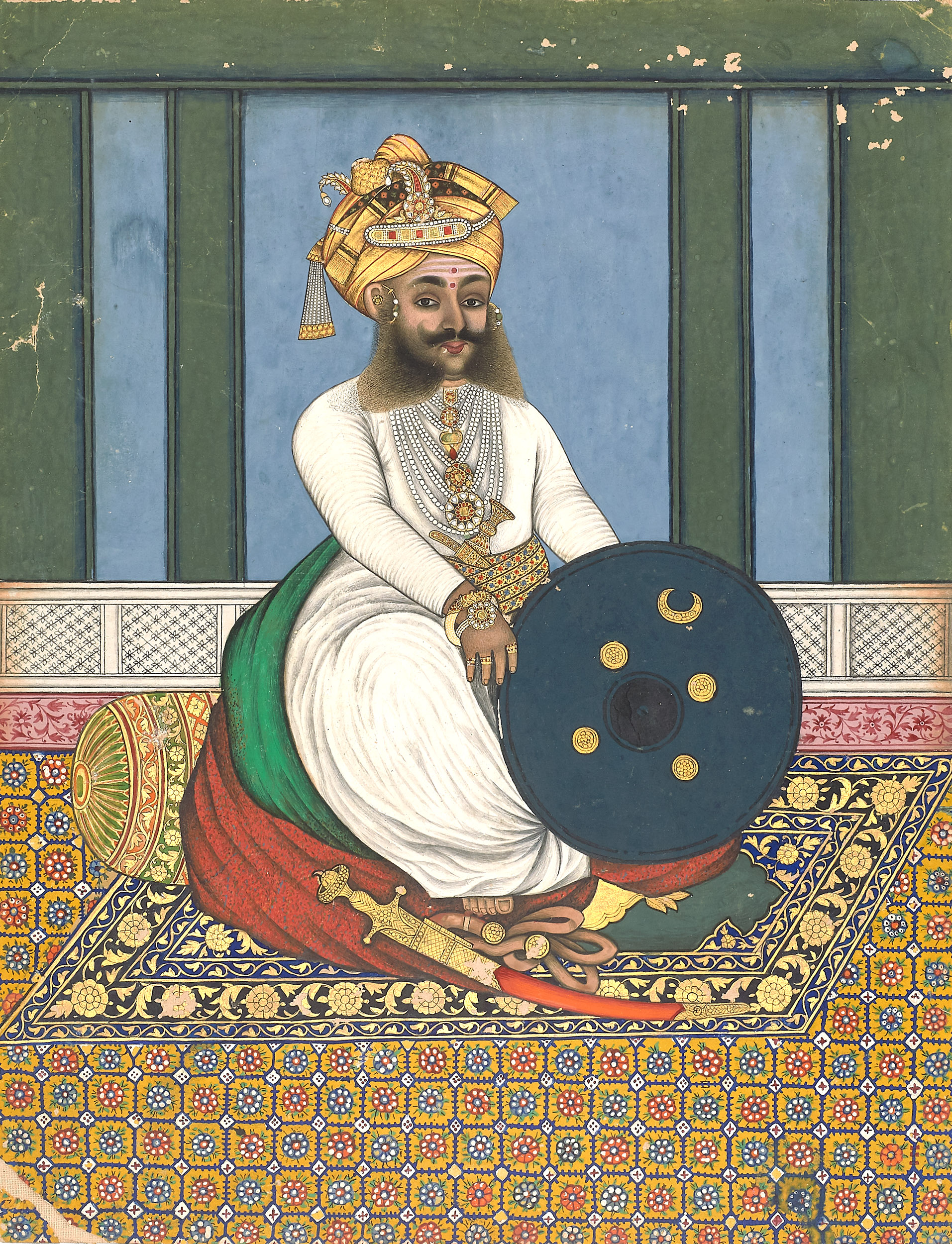Rao Desalji II (1816, r. 1819-1860)
Kutch, 1840
Opaque pigments with gold on paper
Image: 27.4 x 21.1 cm
If we compare this striking portrait of Rao Desalji II with one of his father, Bharmal II1, we see that much had changed in the two or three decades that had passed between the production of the two pictures. Instability and infighting at court lead to widespread piracy in the Arabian Sea, which was a matter of great importance to the British who used it for trade. In 1809 an agreement was signed between Jamadar Fateh Muhammad, acting on behalf of Rao Raydhan, and the British, beginning a political relationship. Despite signing a treaty of alliance with the British and accepting a British Resident at Bhuj, Bharamal II was never comfortable with them becoming established in his territory. Displeased with his level of cooperation, the British took actions to have him disposed of and his illegitimate infant son, Rao Deslji, was selected as the new ruler.
The increased foreign presence in Kutch during Rao Deslji’s reign appears to have had an influence on the local painting tradition. Several unusual copies of European prints may come from this time and artists inspired by contemporary work from Delhi and Punjab churned out albums of paintings of local personalities for company officials. One such album of paintings, which belonged to Henry Pitman (1818-1882), a fellow of the Royal College of surgeons who served in Bhuj from 1847-49, includes a portrait of “Rao Desaljee Bhooj”2. The two portraits are clearly from different workshops, ours being the more polished of the two, while S.C. Welch describes the Pitman picture as full of “earthiness and honesty”3. A preparatory study of this painting is also in the Relia Collection4 and a grand painting, possibly by the same artist as our picture, depicting Desalji enjoying a nautch along with 24 courtiers, is also known5.
1. A Place Apart, Painting in Kutch, 1720-1820, Goswamy and Dallapiccola, Pl. 7.
2. Sotheby’s, Fine Oriental Manuscripts and Miniatures, London, 12/14/1987, Lot 44 (Stuart Cary Welch, Room for Wonder, p. 158). Another version of this picture, which shows Desalji seated directly on a terrace, was formerly in the Peter Blohm collection, Aberystwyth. A standing portrait of Desalji II from an album by the same workshop was recently published in J.P. Losty, Indian Life and People in the 19th Century Company Paintings in the Tapi Collection, Pg. 152. The Tapi Collection album formerly belonging to Lt. Stanley Napier Raikes, assistant to the political agent at Kutch, Sir George Le Grand Jacob (1805-1881).
3. Stuart Cary Welch, Room for Wonder, p. 159.
4. Relia, The Indian Portrait: an artistic journey from miniature to modern, Pg. 22.
5. Aina Mahal museum, Bhuj, see C. London, The Arts of Kutch, Pg 55, also see a drawing of this scene in the Harvard Art Museums/Arthur M. Sackler Museum, 1984.531.
